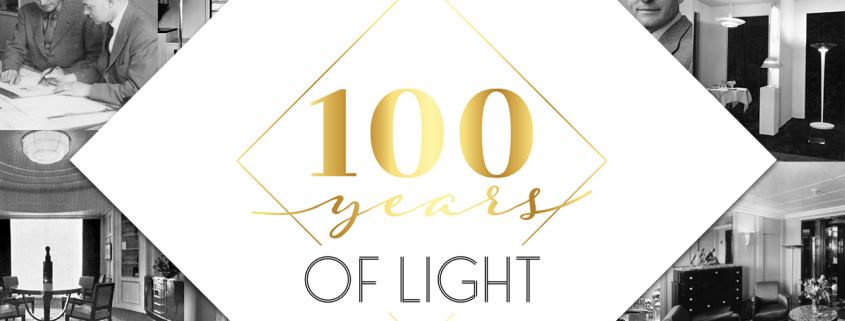For a century, the Atelier Jean Perzel has illuminated the most prestigious interiors with exceptional creations. Our elegant and timeless art lights have stood the test of time, overcoming crises and aesthetic evolutions… without a single wrinkle!
100 years old and still as modern as ever?
Yes, we have a secret. And it can be summed up in one word: passion.
It is this passion that has encouraged the three successive generations to maintain an exceptional know-how. It is also this passion that has led Jean Perzel, François and Olivier Raidt to the constant search for luminous perfection. A light that illuminates, but without blinding. Which erases shadows and embellishes faces.
An art.
For these 100 years, we take you on an extraordinary journey through time, where innovation, quality and design have always gone hand in hand. Immerse yourself in the fascinating history of the Atelier Jean Perzel.
Light on Perzel’s beginnings: when excellence meets electricity
How did this Bavarian master glassmaker become the French pioneer of modern lighting? How did he go from stained glass to electricity?
It’s simple: a good dose of audacity, an insatiable passion and an avant-garde vision.
Jean Perzel : the art of glass, the passion for light
Son and grandson of a glassmaker, Jean Perzel began his apprenticeship in Munich in 1905. He was 13 years old. He graduated brilliantly, and set off on the roads of Europe, on foot, as a companion of duty. Austria, Czechoslovakia, Switzerland, Italy, France… It was in 1910 that he decided to settle in Paris, where he had no trouble getting hired by several master glassmakers. He continued to perfect his skills and was even sent to Algiers to create the stained glass windows for the Prefecture’s dome.
After the First World War, his voluntary commitment in the foreign legion will allow him to be naturalized French.
Upon his return, he joined the workshops of the famous master glassmaker, cabinetmaker and decorator Jacques Grüber. There, he perfected his knowledge of stained glass assemblies and light mastery. How to make it radiate through the glass?
It is this permanent quest that led him to leave Gruber and the restoration of church windows, to create his own workshop in 1923.
“I had specialized in stained-glass windows until the day when I realized all that there was to achieve in electric lighting fixtures, which were still, a few years ago, only lamps with petroleum or processed candlesticks.”
(Jean Perzel published in 1930 by the magazine Lux)
In the 20’s, the electricity develops on a large scale and Jean Perzel wishes to tame this new light source. He starts to draw, cut, assemble his new creations : lights.
Ironically, it is under a gaslight, in a small apartment without electricity, that his first pieces are born.
First lightings signed by Perzel: an immediate success
Right from the start, Jean Perzel gave life to a collection of numbered lights, each model bearing its own unique identity. The very first-born, the model No. 1, is a living room floor lamp that has stood the test of time. Let yourself be captivated by its derived version, the floor lamp No. 1C, always meticulously manufactured in our workshops!
Between 1922 and 1924, Perzel’s creative imagination flourished, giving rise to a multitude of pieces inspired by the art of stained glass. The first wall lights were adorned with daring geometries, while the first known suspension, No. 6, was an assembly of juxtaposed hexagons.
“I designed my first lamps in the manner of the divine old stained glass windows of churches.”
(Jean Perzel published in 1930 by the magazine Lux)
In 1924, he presented 4 models at the Salon d’Automne. Selected and exhibited, they immediately won over the baron Robert de Rothschild, who acquired the complete collection. This is the beginning of success.
Jacques-Émile Ruhlmann, Jules Leleu, Robert Mallet-Stevens, Pierre Chareau, Michel Roux-Spitz and many others wanted to work with him so that he could highlight their spaces.
Innovative, functional, elegant, refined, entirely in the Art Deco style, his creations aroused the interest of renowned architects and decorative artists. And the orders, public and private, are pouring in.

Innovate to survive: the successful challenge of the Atelier Jean Perzel, through the ages
Jean Perzel was able to perfectly combine his craftsmanship as a master glassmaker and his enlightened understanding of light to imagine devices designed for electricity. Driven by an insatiable passion, he seeks to achieve luminous mastery, constantly pushing the limits of his art.
The quest for the perfect structure for exceptional lighting
Innovation is at the heart of Jean Perzel’s creation.
For his lamps, he wanted to hide the light source, while making the most of its rays. He then researched the opacity of different glasses and finally turned to optical glass. Used, until then, only in eyewear, he was the first lighting designer to frost and sandblast this crystal to obtain a better diffusion of light rays.
“In front of Jean Perzel, it seems to me that all the lighting designers have fled. There were once a number of them who imitated him, who tried to distinguish him. But the public is not mistaken and Perzel remains the only master of the place. (…) Perzel is truly the prince of modern lighting.”
(L’Art vivant, magazine of January, 1930, Ernest Tisserand)
For his creations, he abandons lead, inherited from his art as a master glassmaker, in favor of brass. This new assembly gives him more freedom: an architecture in space, easy dismantling in case of later intervention as well as the masking of electrical wires.
The ceiling lights benefit fully from this new material.
If these innovations contribute to its success, they will also allow it to survive the crises of these troubled times.
From crisis to crisis, the Atelier Jean Perzel continue to shine
A stock market crash, a world war, mass production… it took a lot of passion, a lot of creativity, and a lot of rationality to resist and recover.
Survive and grow despite the crisis of 1929
After the crisis of 1929, orders were rarer, but Jean Perzel managed, despite everything, to keep the ten companions who worked in his workshop. His thrifty side, endless workdays, and discounted prices allow him to maintain his company and even expand.
In 1931, he moved his workshop to a brand new building, which he commissioned from the architect Michel Roux-Spitz: 3 rue de la Cité Universitaire, facing Parc Montsouris in Paris. He now had a beautiful exhibition room and basement studios large enough to give free rein to his creativity.
What an emotion to enter such a place today! The showroom has grown, but the workshops have kept all their authenticity.
For the record, the telephone number has also gone through the ages, has evolved, but has kept the same numbers. In 1931, you had to dial Gobelins 77-24 to reach Jean Perzel.

Perzel luminaires facing the darkness of war
The following years are illuminated by Perzel lights, beaming in the most prestigious places around the world.
The following years are illuminated by Perzel lights, beaming in the most prestigious places around the world.
But the World War II broke out, leading to the mobilization of Jean Perzel, and then his nephew François Raidt. At the end of hostilities, the company was requisitioned and kept under control until 1948, thus keeping the fate of the luminaries in the shadows.
Jean Perzel then takes over the reins of his devastated company. Deprived of his creativity for many years, he embarked on a true artistic renaissance. On the eve of the 1950s, he had to meet the expectations of a generation with new tastes… and reinvent itself.
The 1950s called for mobile lighting, with articulated arms stretching into large shades. A trend that Jean Perzel, visionary, had anticipated as early as 1936 with his wall sconces with movable arms and innovative floor lamps.
And he put particular emphasis on the expansion of his collection of outdoor lighting, thus responding to the strong market demand.
Unfortunately, in 1951 Jean Perzel falls ill. And François Raidt, assisted by only 3 companions (they were 18 before the war), is entrusted with the integral management of the family business.

Perzel, in the competitive arena of the 1960s
In the 1960s, the French economy was flourishing and this was the breeding ground for the development of unbridled trade. Customers are more concerned with the apparent novelty of a model than with its qualities.
It is therefore a difficult period for François Raidt who is forced to borrow money to support the company. He is also trying a new commercial approach: resale to professionals. But the margins are too low and he abandons this idea after two years of experimentation.
However, he refused to be discouraged. Following in his uncle’s creative footsteps, he multiplied the number of salons and designed a large number of new models: swivel sconces, reading lights, as well as lighted consoles and mirrors adorned with lights.
And the return to safe values is not long in coming. For some, quality still prevails over novelty and the works of art of the 1930’s, reinvented and brought up to date, are regaining their former appeal.
In recent years, Olivier Raidt, François’ son, has modernized Perzel’s lighting fixtures by creating a more contemporary range, available in 9 colors. A true rejuvenation of the emblematic pieces of the Ateliers Perzel, which remain timeless.
Perzel art lightings: timeless elegance
For 100 years, Perzel creations have illuminated the most prestigious spaces around the world, demonstrating exceptional craftsmanship and design that defies the ages.
As early as the 1920s, Jean Perzel designed specific models for restaurants, theaters and private hotels. But some collaborations have made more history than others.
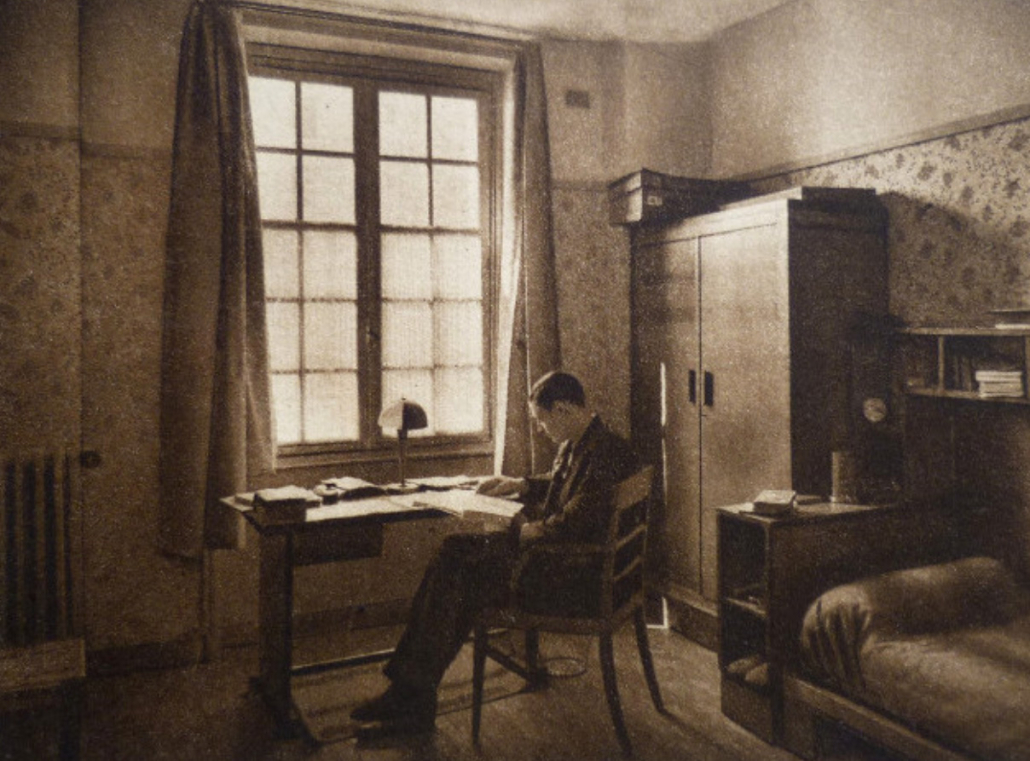
- Office lamps No. 509 bis at the Cité Universitaire in Paris.
You can admire this lamp in many hotels and luxury restaurants. If the students of the time had known that this lamp would become a real collector’s item…!
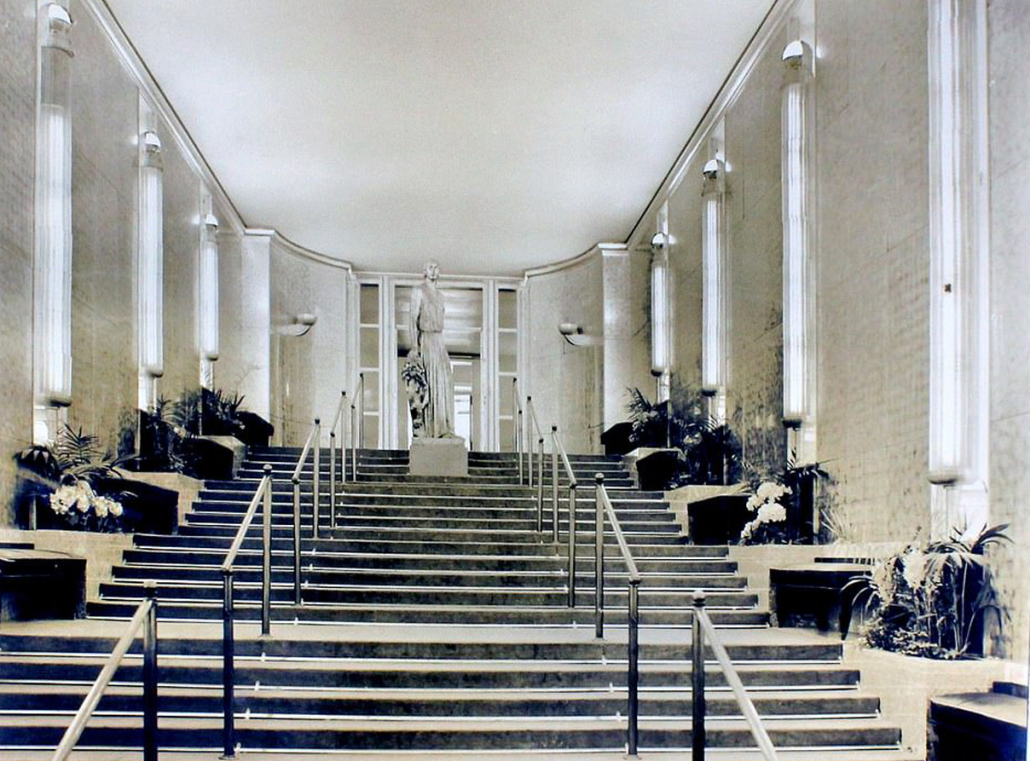
- The Normandy liner, but also the Queen Mary, the France, the Pasteur.
Showcase of the technique but also of the French art of the time, and considered as a floating palace, the S.S. Normandie illuminated the Atlantic with creations signed by Jean Perzel.
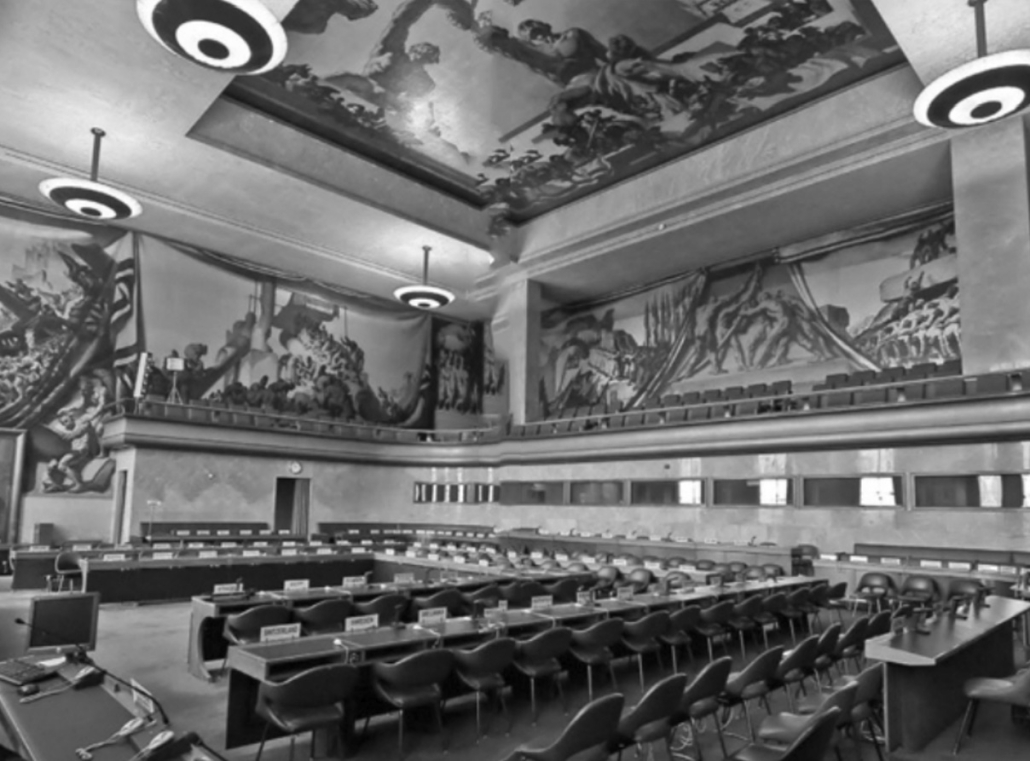
Wall lights, floor lamps, ceiling lights… Jean Perzel was commissioned in 1936 to light the Palace of the League of Nations (UN) in Geneva. For example, our ceiling lights No. 601 have illuminated great moments in world history and still illuminate this magnificent council chamber.
One of the first four prizes received by Jean Perzel at the 1936 Decorative Lighting Competition was awarded to this ceiling lamp.
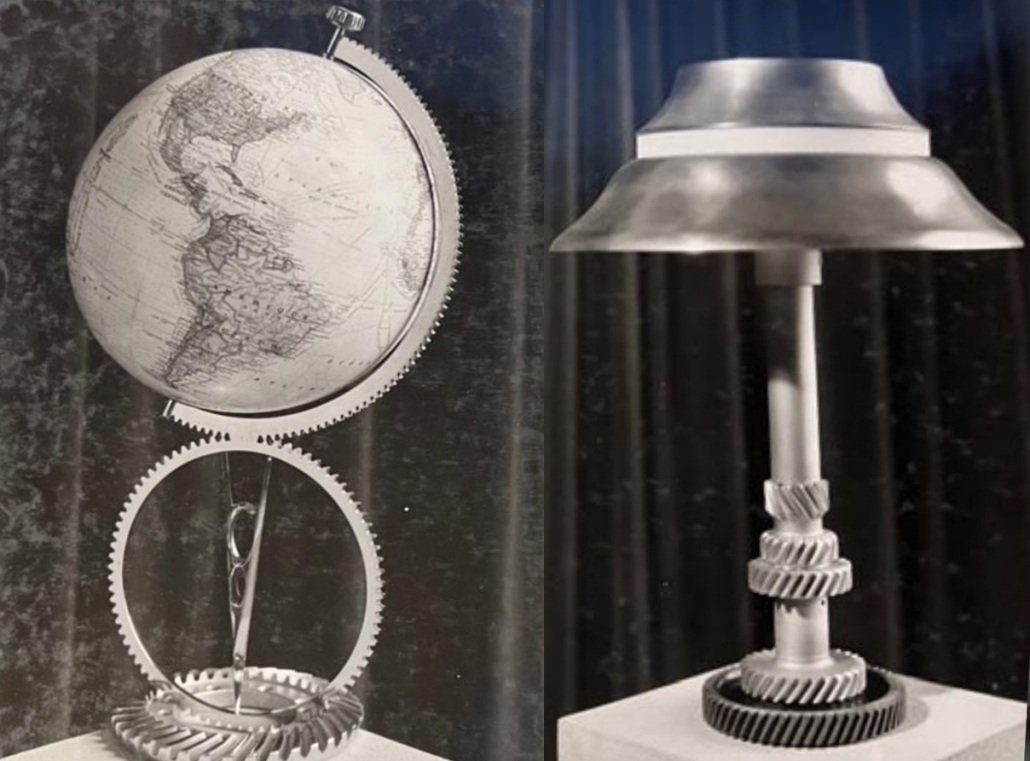
- The Ford Motor Company
The 25,000,000ᵉ car produced by the car company generates an exceptional demand. The Atelier Jean Perzel is contacted in 1937 to create, in 36 hours, decorative objects from mechanical spare parts from the brand’s catalog. With Jean Perzel absent, it is François Raidt, only eighteen years old, who assures the order. He submits twenty-one proposals and all are retained by the Ford Motor Company. Desk lamps, ceiling lamps, wall lamps, hanging lamps, floor lamps integrate crowns, pinions, pistons and connecting rods in their structure. Quite a challenge!
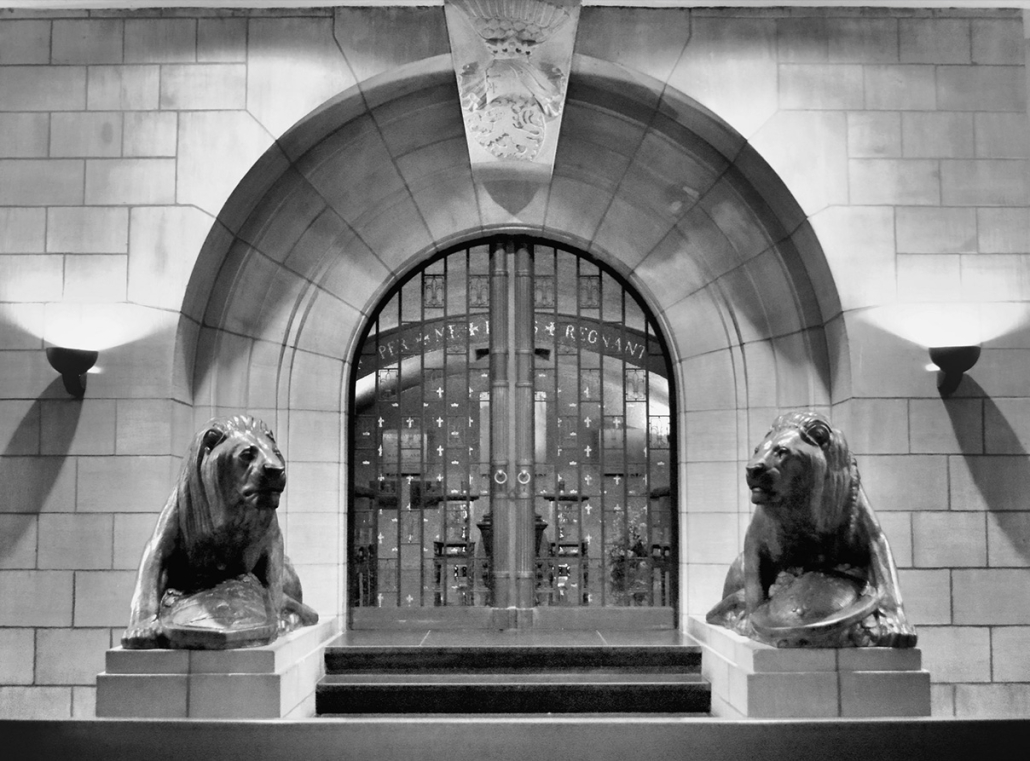
- Notre-Dame of Luxembourg Cathedral
When various rearrangements took place between 1935 and 1938, Jean Perzel proposed the wall lights No. 347 to create an almost divine luminous atmosphere, perfectly suited to this place.
- The interiors of Karl Lagerfeld, Yves Saint-Laurent, Louboutin, Chanel…
Barney’s, Tiffanys, Ralph Lauren, … These greats of beauty and fashion were not mistaken. Maharajas, politicians and crowned heads, either.
And the greatest architects and decorators of the 20th century, such as Le Corbusier or Mallet-Stevens, have chosen Perzel creations to highlight their own work.
High-end luminaires from Atelier Jean Perzel have found their place in prestigious residences around the world, bringing a touch of sophistication and unparalleled elegance.
And they continue to seduce contemporary architects. But also collectors, art lovers and connoisseurs from around the world.
Perzel today: ancestral values for a bright future
Jean Perzel knew how to use his art, his know-how of excellence as a master glassmaker, to create a lasting luminous heritage that continues to this day. And he did not fail to pass on his values and his knowledge to his nephew, then to his great-nephew.
Craftsmanship passed down from generation to generation
In 1933, after a decade of success for the workshop, Jean Perzel wanted to pass on his art and get help. His rational mind looks to the future, as always.
He is 41 years old, has no children and therefore turns to his nephew François Raidt. The young man engages in a demanding apprenticeship to become a companion of duty. Days in the workshop, at all workstations. Evenings to revise… We understand better how he was able to manage alone, at 18, the incredible order from Ford!
In 1980, it was the turn of Olivier Raidt, François’s son, to take over the workshop. And as the family tradition dictates, he also trains at all the work stations.
“We have remained a craft company, able to ensure the quality of the product, to preserve the tradition and the flexibility of adaptation for each customer as we have always done.”
Olivier Raidt
The Atelier Jean Perzel: an emblematic place
Before you even push the door of this Art Deco building at “3 rue de la Cité Universitaire” in Paris, Perzel lights welcome you. And you immediately feel privileged. You have just taken a trip back in time.
You have the impression of hearing the walls speak to you, telling you the story of this workshop, but also the history of art and even great History.
And if you are lucky enough to go down to the basement, you discover the workshops, identical to what they were in 1931. The same machines. The same gestures.
What is striking here are the hands of these companions. Master glassmaker, master bronzer, polisher, sandblaster, varnisher… between their fingers, the materials seem to have a soul and the gestures are precise, ancestral, almost magical… You are spellbound.
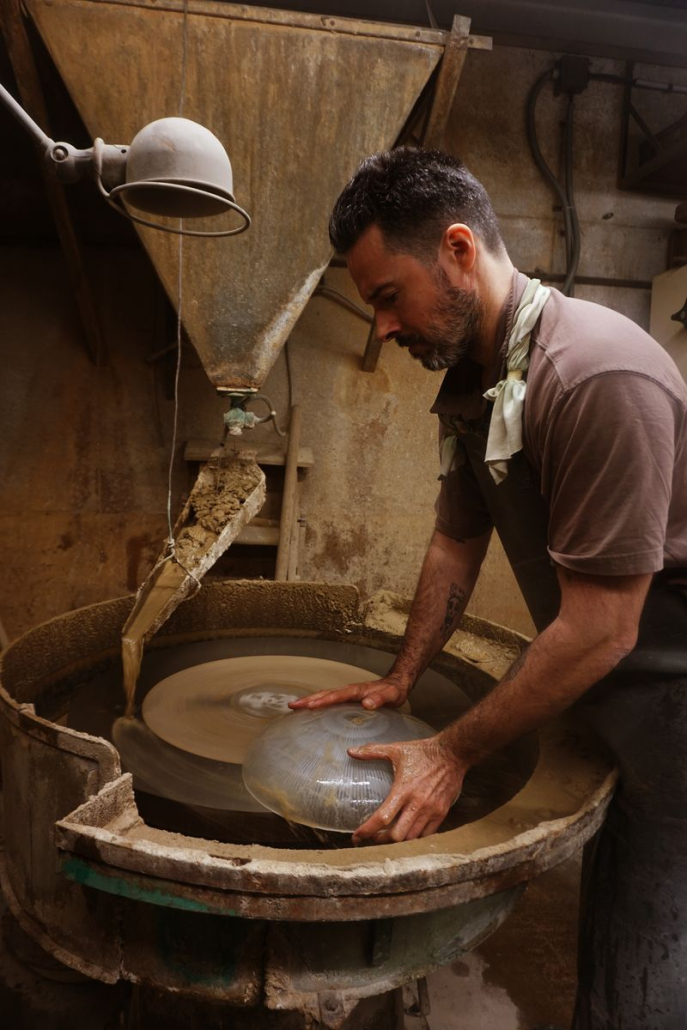
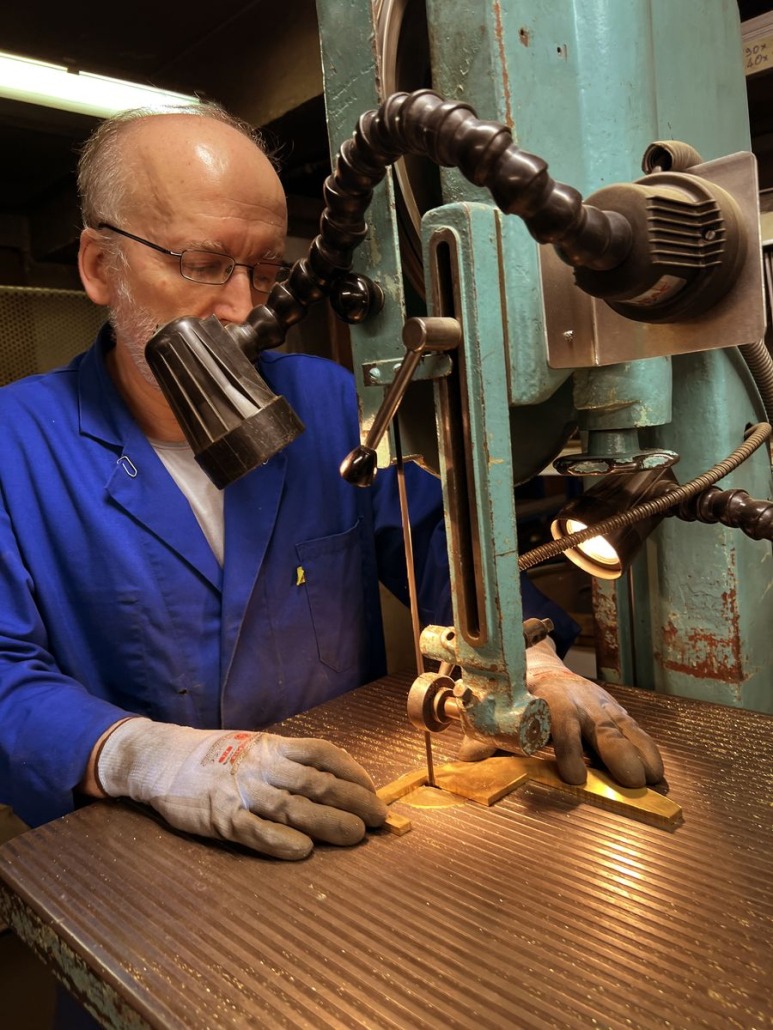
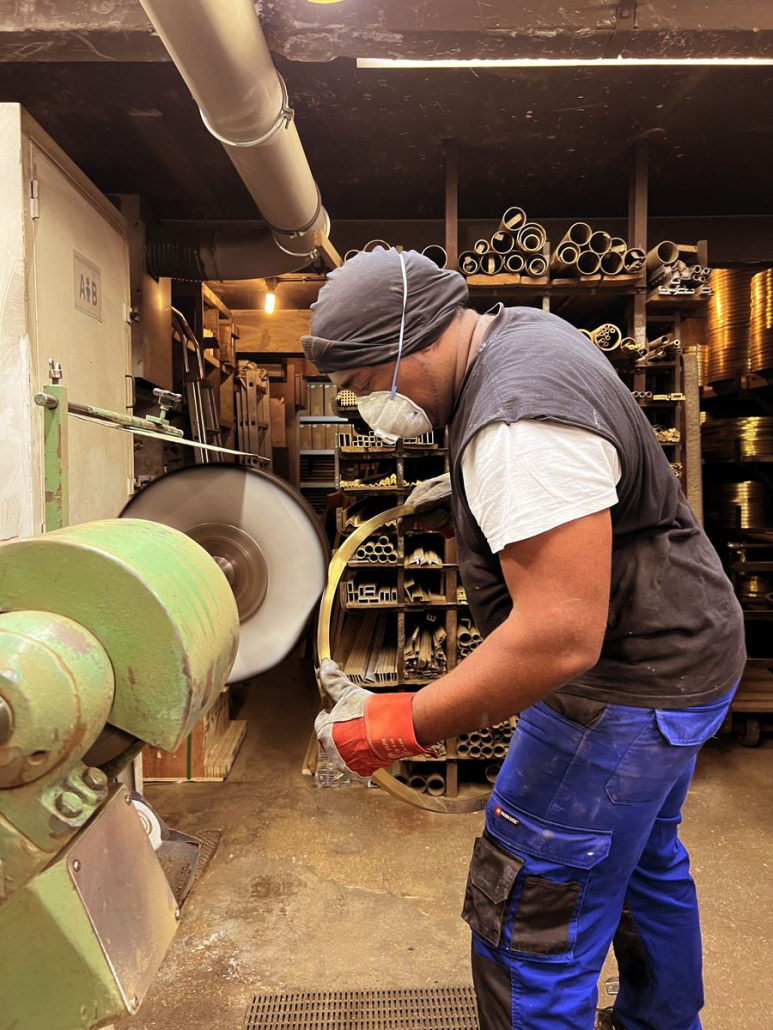
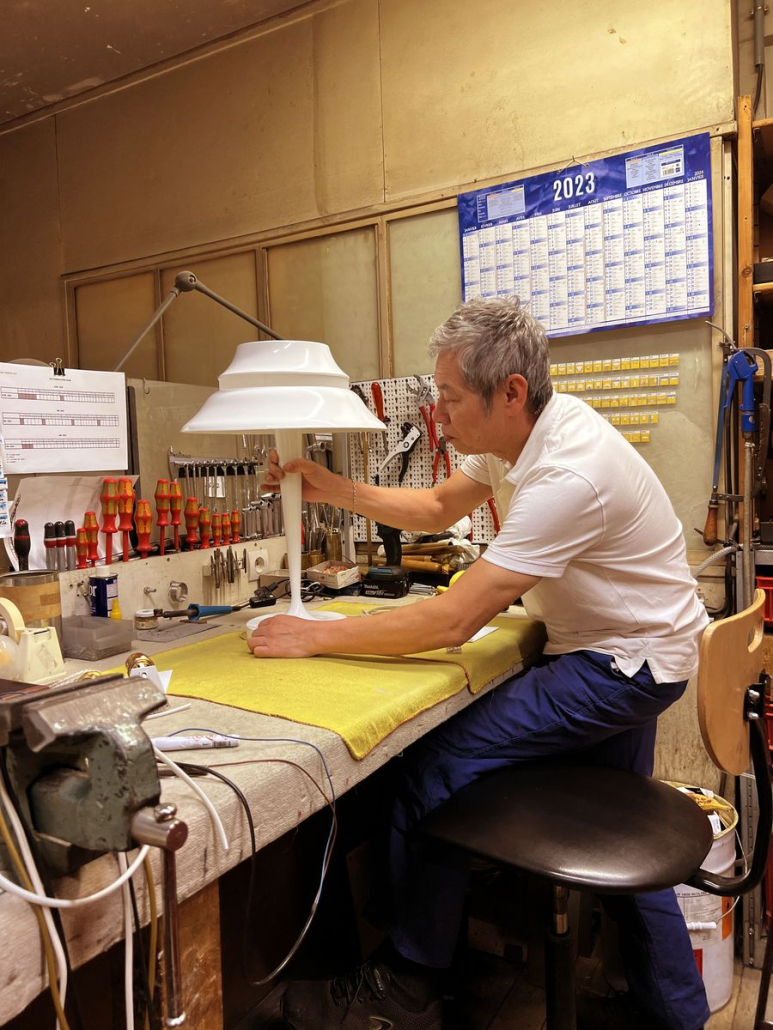
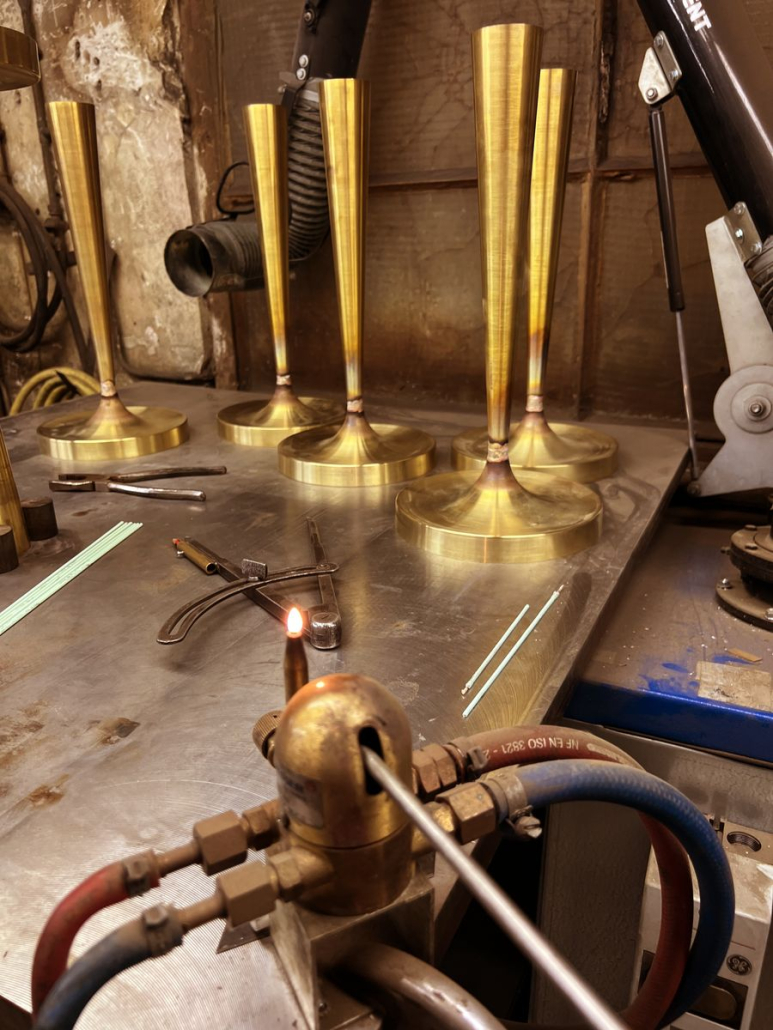
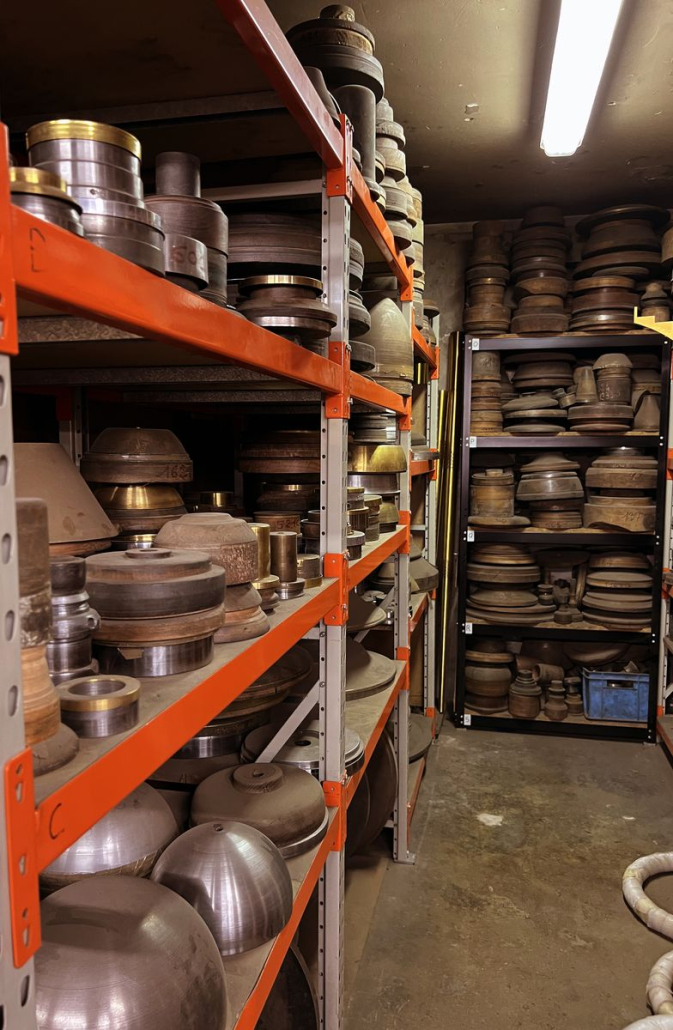
The Atelier Jean Perzel: a place of art
Lamps, wall lights, reading lights, ceiling lights, pendant lights, floor lamps seem to come to life before your eyes. But it is actually a real work of craftsmanship that gives birth to them.
40 to 250 hours of work are required to create each piece.
These jewels are works of art. A legacy to pass on. Or for the more pragmatic: an investment.
It is for all these hours of creation, for the transmission of an exceptional know-how, for these emblematic workshops, for this history, that we have obtained the Living Heritage Company label from the French government. And we intend to promote this heritage for a long time to come.
Jean Perzel’s lightings around the world
In our workshops, we have preserved our values, our incomparable quality, our authenticity.
In our relationship with our customers, we have preserved this unique bond, this exclusivity which allows us to adapt to your specific needs, to the dimensions of your room. We design luxury lighting fixtures, for demanding customers, and we ship them around the world, in beautiful wooden crates, specific to works of art.
And today, thanks to our online presence, you can explore our collection, personalize your lights and see them in situ in prestigious places: luxury apartments in Moscow, lofts in New York, architects’ offices in Zürich…
What about tomorrow ?
Tomorrow one of our lamps, or one of our wall lights, will perhaps illuminate your interior and the faces of those you love, with this unequaled softness, this incomparable clarity, this timeless luxury that only Atelier Jean Perzel can create.
And you will discover the Art of diffusing light, as imagined by Jean Perzel 100 years ago.

